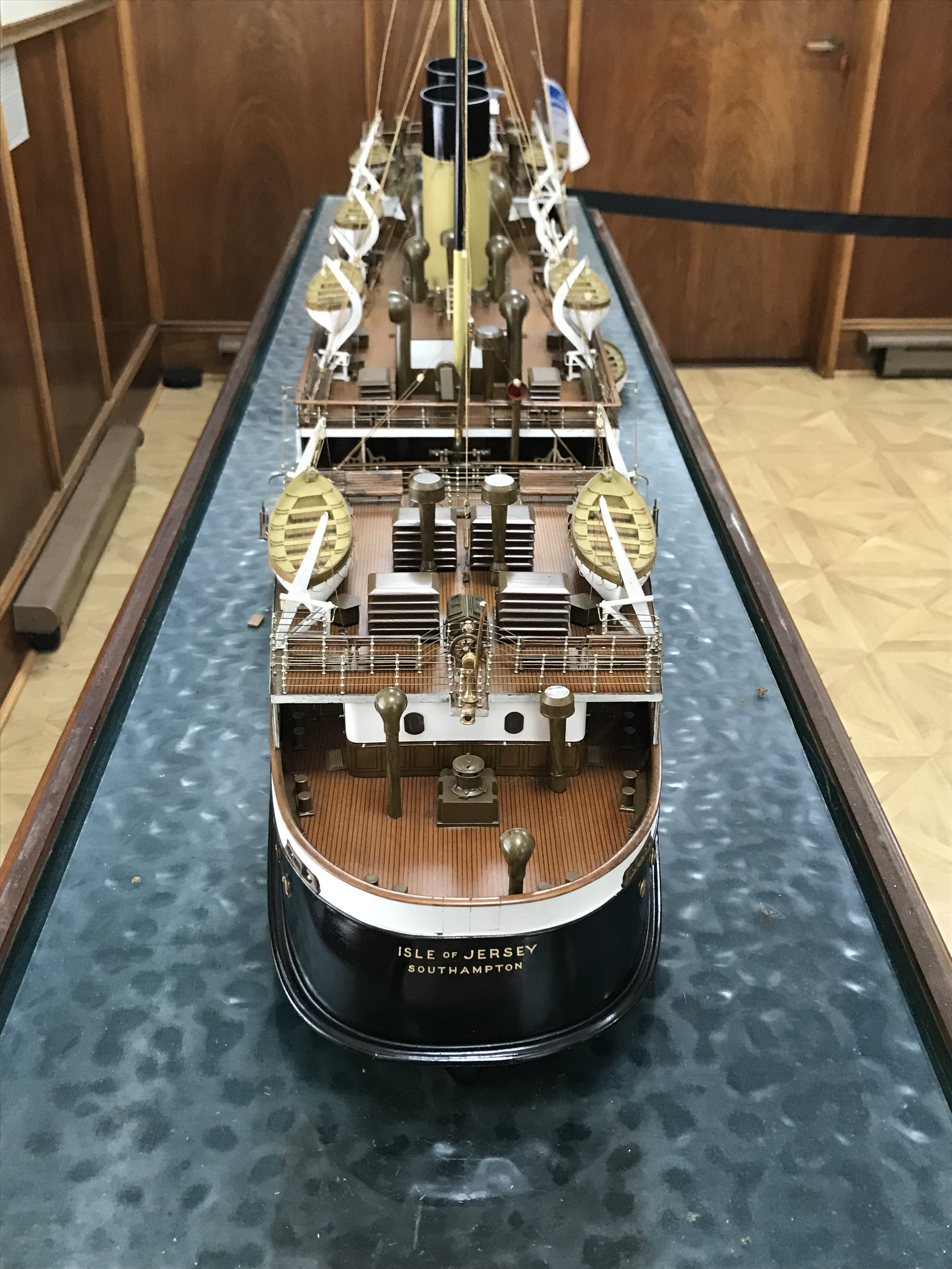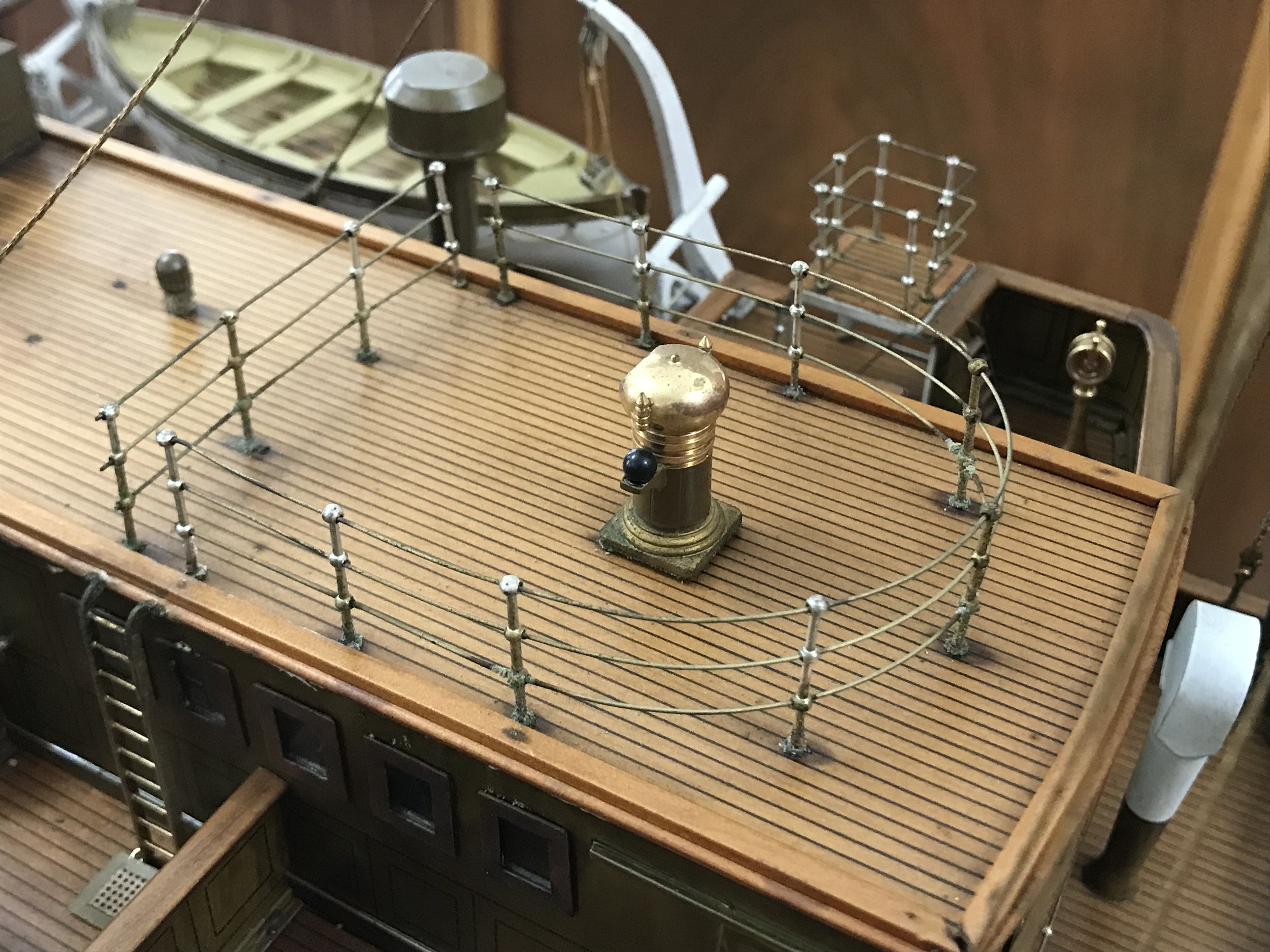Conserving the ‘Isle of Jersey/Guernsey’
These past few weeks I have been working onsite at the Denny Ship Model Experiment Tank Museum in Dumbarton, conserving a particularly interesting object in their collection.
The Denny Tank Museum, which celebrates the history of the Denny Brothers shipbuilding company, is home to a number of handmade model ships, but one model in particular, ‘The Isle of Jersey / Guernsey’, was highlighted for conservation as part of the Powering Our People Project.
The model was constructed as a scaled down version of two passenger steam ships built by the company in 1929 for Southern Railways. Both vessels originally served as passenger ships between Southampton and the Channel Islands, but following the Second World War, they were repurposed by the Royal Navy. The ‘Isle of Jersey’ was based at Scapa Flow, in the Orkney Islands, where it served as a Hospital Ship, while the ‘Isle Of Guernsey’ was used to carry members of the Royal Air Force to France. The ‘Isle of Guernsey’ also went on to play an important role in the evacuation of Dunkirk, helping more than 800 soldiers to safely cross the channel.
‘The Isle of Jersey / Guernsey’, at the Denny Ship Model Experiment Tank Museum, Dumbarton
The model, which was also built by the team at Denny Brothers & Co. and was acquired by the Scottish Maritime Museum in 2015, has been constructed using a variety of materials, including a laminated and carved wooden hull, fitted wooden cabins, decks & lifeboats, metal railings, porthole windows & benches, and a number of plastic components such as funnels, winches & grates, all topped off with cotton threading & copper wire rigging (see images below!)
The fine craftsmanship and intricate nature of the model made it fascinating to work on, but its composite nature also made it quite a challenge! A number of conservation issues had presented on the various ship components, including corrosion on some of the copper cabin window frames, and degradation of the cotton rigging, causing some of the lifeboats to become detached. Despite being housed in a glass display case, the entire ship was also covered in a thick layer of dust and soiling, obscuring details in some areas, and likely exacerbating some of the corrosion issues!
The conservation of this model took two weeks, as myself and fellow AOC Conservator Brandon Hamer painstakingly reduced metal corrosion, swab cleaned every surface, and replaced all of the broken and degraded rigging using specially selected nylon thread in a sympathetic colour. Several detached components such as window frames, doors and door mats were also reattached during the treatment.
Above: Detail of corroded metal components and detached window frame before conservation (left) and after conservation (right)
Above: AOC Conservator Brandon Hamer replacing degraded rigging on the passenger platform ladder
Because the conservation works were carried out onsite at the Denny Tank Museum, this offered up another great opportunity for some public engagement and in house training for IMS staff. Towards the end of the first week onsite I was joined by staff and volunteers from the Museum of Scottish Railways, who came to learn about conservation approaches to ship models as they prepare for the model arriving in their collection later in the year!
Above: Vicky Kerrigan, Assistant Curator at the Museum of Scottish Railways, and volunteer Jim Summers, joining me for some hands-on work!
If you would like to learn more about the Denny Brothers and the history of the Maritime Museum in Dumbarton, follow the link below!













